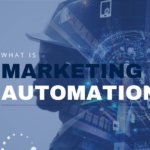Introduction
As businesses strive to capture consumer attention amidst the clutter of online content, the integration of Artificial Intelligence (AI) into Google new search optimization ads presents a transformative opportunity. Leveraging AI for improved search ads performance not only streamlines the ad creation process but also enhances targeting precision, bidding strategies, and overall campaign effectiveness.
AI-powered analytics and personalized targeting are revolutionizing contemporary marketing. Chatbots offer immediate customer support, while predictive analytics fine-tunes ad placements, both contributing to the transformation of marketing approaches. AI is improving customer engagement and enabling more precise, effective campaigns that drive lead generation.
In this article, let’s delve into the various AI-powered strategies available for Google Search Ads.
Did you know Google holds a dominant position, holding 81.95% of the global search engine market share?
AI-Powered Improvements in Query Matching
As digital advertising continues to evolve, AI-powered improvements in query matching are at the forefront of enhancing the effectiveness of Google new search optimization ads.
- AI-Powered Broad Match Improvements
One of the standout innovations in AI-driven query matching is the enhancement of broad match keywords. Traditionally, broad match keywords could sometimes lead to mismatches, resulting in ads appearing for irrelevant searches. However, with AI, broad match keywords are now optimized through advanced algorithms that understand user intent more accurately.
- Benefits for Advertisers Using Smart Bidding
AI-powered improvements in query matching are closely tied to the effectiveness of Smart Bidding strategies. Smart Bidding uses machine learning to automatically adjust bids based on various factors such as user behavior, location, device, and time of day. When combined with enhanced query matching, Smart Bidding can optimize ad spending more effectively by focusing resources on high-intent queries and avoiding irrelevant ones.
- Key Metrics for Measuring Performance Improvement
To gauge the effectiveness of AI-powered query matching and Smart Bidding, you should monitor several key metrics, such as:
- Click-Through Rate (CTR): An increase in CTR indicates that ads are becoming more relevant and engaging to users.
- Conversion Rate: Higher conversion rates suggest that the ads are attracting clicks and are also resonating with users.
- Cost Per Acquisition (CPA): A lower CPA is a strong indicator that AI-driven optimizations are leading to more cost-efficient ad spend and better targeting.
- Quality Score: Improved query matching often leads to higher Quality Scores, which can reduce costs and improve ad placement.
- Search Term Reports: Analyzing search term reports can provide insights into how well the broad match keywords are performing and whether the AI is effectively capturing relevant queries.
Here’s a fun fact: CTR is a crucial metric for monitoring the performance of paid ads. Data indicates that the average CTR for Google ads ranges from 4-6%.
Managing Brand Traffic Effectively
Managing brand traffic effectively is a crucial aspect of optimizing search ad campaigns. With the right strategies, you can ensure that your brand remains prominent in search results while maximizing the efficiency of your ad spend. Here’s a look at two key strategies for managing brand traffic:
- Brand Inclusions in Broad Match
Incorporating brand terms into broad match keywords can be a powerful strategy for enhancing visibility and capturing high-intent traffic. Traditionally, broad match keywords might lead to a wide range of search queries, some of which may be irrelevant. However, by including brand-specific terms in broad match, you can leverage AI-powered enhancements that improve query matching to ensure that your Google new search optimization ads appear for searches closely related to your brand.
- Brand Exclusions Across All Match Types and Dynamic Search Ads (DSA)
While including brand terms in broad matches can be beneficial, managing brand traffic also involves strategically excluding brand terms to avoid unnecessary competition and wasted spending. This is especially important for avoiding overlap between your branded and non-branded campaigns.
Leveraging Recommendations for Better Performance
Leveraging recommendations effectively is key to optimizing search ad performance and ensuring your campaigns reach their full potential. Here’s how to use and implement these recommendations for better performance:
- Utilizing New Recommendations for Brand Inclusions
To effectively use new recommendations for brand inclusions, start by reviewing AI-generated suggestions in your search ad platform. Incorporate these terms into your keyword lists, focusing on those with high potential to drive relevant traffic. Ensure that these brand terms are matched to appropriate ad groups and that ad copy aligns with the new keywords. Regularly monitor performance metrics to assess the impact of these inclusions. Adjust your strategy based on these insights.
- Steps to Implement Brand Inclusions
Start by analyzing performance data for branded keywords to identify which terms perform well and which don’t. Use AI recommendations to incorporate new or optimized brand terms, including variations and misspellings, into your keyword lists. Add these terms to different match types, such as broad match, to capture a wider range of searches. Adjust your bidding strategies by increasing bids for high-performing terms and optimizing for less effective ones.
- Maximizing Benefits from Brand Exclusions
Analyze brand term overlaps between different campaigns, including branded versus non-branded or different match types. Add brand terms as negative keywords in non-branded campaigns to prevent Google new search optimization ads from appearing for brand-related searches, focusing your budget on non-branded traffic. Exclude brand terms in Dynamic Search Ads (DSA) to avoid competition with branded keywords, enhancing DSA’s effectiveness.
Enhancements in Search Terms Reporting
Enhancements in search terms reporting are transforming how advertisers manage and optimize their search ad campaigns. Here’s how these enhancements can be leveraged for better performance:
- Increased Visibility of Misspelled Search Queries
Recent advancements in search terms reporting now provide more comprehensive data on misspelled search queries. This allows you to see variations of terms that users are searching for, including common typos and phonetic errors.
- Applying Misspellings to Negative Keywords
Not all misspellings are beneficial for targeting. Some might lead to irrelevant traffic that doesn’t convert. Identifying these irrelevant misspellings is crucial to avoid wasting ad spend.
Utilizing Responsive Search Ads
Utilizing Responsive Search Ads (RSAs) is a powerful way to enhance the effectiveness of your search ad campaigns. RSAs offer a level of flexibility and optimization that traditional ad formats cannot match, allowing for more personalized and relevant ad experiences. Here’s how you can leverage RSAs effectively:
- Creating Flexible Ad Formats
RSAs allow you to input multiple headlines and descriptions, which Google’s machine learning then combines in various ways to create different ad formats. This flexibility means that the Google new search optimization ads can automatically adapt to different search queries and user intents.
- Adding Optimized Headlines and Descriptions
Include high-performing keywords in your headlines and descriptions to ensure that your ads are highly relevant to user searches. This helps improve ad relevance and Quality Score.
- Automating the Best Performing Assets for Each Query
RSAs use machine learning to automatically test different combinations of headlines and descriptions and determine which ones perform best for specific queries. This means that the system continuously learns and adapts to optimize ad performance.
Did you know that placing your ad on Google can give you an edge over competitors when people are searching for a product? This is because 65% of consumers click on these ads when they are ready to make a purchase.
Best Practices for AI-Powered Ad Optimization
AI-powered ad optimization offers dynamic and efficient ways to enhance your search ad campaigns. To maximize the benefits of AI technologies, it’s crucial to follow best practices that ensure continuous improvement and optimal performance, such as:
- Daily Optimization Strategies Post Campaign Launch
Daily reviews of Key Performance Indicators (KPIs) help identify any immediate issues or opportunities for optimization. Based on daily performance data, make adjustments to bids and budgets to allocate resources effectively. Increase budgets for high-performing campaigns and reduce spend on underperforming ones.
- Advanced Bidding Adjustments
Implement AI-driven smart bidding strategies such as Target CPA, Target ROAS, or Maximize Conversions. These strategies use machine learning to adjust bids based on real-time data and historical performance automatically.
- Regular Review of Audiences and Segments
Regularly review the performance of different audience segments to understand which groups are most engaged and which are underperforming. This helps in refining targeting strategies. Use insights to adjust your audience segments.
- Monitoring and Tweaking Headline Performance
Use AI-powered tools to monitor the performance of different headlines. Analyze metrics to identify which headlines resonate best with users. Regularly conduct A/B tests to compare the performance of different headlines.
Conclusion
The integration of AI technologies into search ad campaigns allows for a level of precision and efficiency that traditional methods simply cannot match. From using advanced bidding strategies to leveraging responsive Google new search optimization ads and enhancing query matching, AI provides the tools necessary to drive more effective and relevant ad campaigns.
If you’re ready to adopt AI-driven enhancements that facilitate a deeper understanding of user behavior and search intent, get in touch with Maino.ai. They enable more accurate targeting and personalized ad experiences. By incorporating AI into your strategies—whether through automated bidding, responsive search ads, or advanced query matching— Maino.ai can significantly improve the relevance of your ads and increase overall campaign performance. Their ability to dynamically adjust and optimize based on real-time data ensures that your ads are consistently reaching the right audience with the right message.













